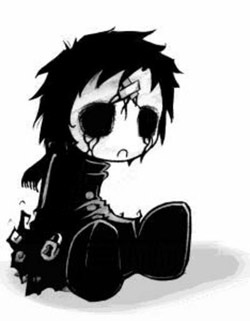Dislodged, spectral, deterring, disconsolate, bleak, expressive, oppressive, disturbed, pessimistic. These are words to describe black and white artwork in a very fitting way. I find depressive, black and white still life and portraiture the most interesting out of most. This kind of photography though is stereotyped, although not incorrectly either. Some pictures in the deep, dark depths of the interwebz portray the most irrational, silly humans whom share their melancholia with their taco-loving, wrist-slitting, hair-dying emo friends on tumblr. Not to worry though because professional black and white pictures do exist and put emoisms in a good light. It must be the mental and visual depth that it creates. Often, the expressions are poised, stressed, sad and the objects are fitted elusively and intimately. The posture is also usually bent or dependent on it's surroundings (i.e. wall, floor) with limbs flayed lifelessly and head bowed at a 45 degree angle. The photo could just be a fence in a blank backdrop but with the simple projection of depth of field and rule of thirds and then you have yourself an intriguing image. Unlike most styles of portraiture, depressive portraits share many common characteristics, and that's what makes it so easy to relate to. If a photograph, not necessarily a portrait, has an apparent gloomy mentality through any point of interest, it might as well be considered an expressionist photograph. The primary and probably most important distinction is for the photograph to have a subliminal psychological reaction, if it doesn't, then try turning it into a pacific of white wash and dense black waves. To paint the picture, here are some core examples that explain how cool (and sometimes lame) this type of portraiture/still life is without the need of a single word.









sad. really depressing.
ReplyDelete